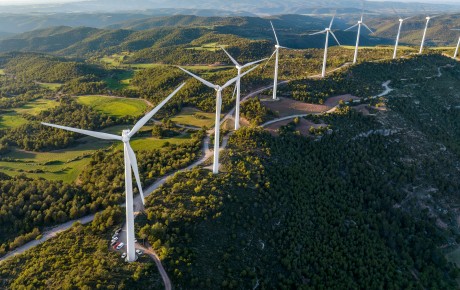Read the rest of the post ' Managing the reinsurance cycle '

Florida reinsurance rate rises disguise the danger of social inflation
2020’s Florida reinsurance renewals look set to deliver some quite impressive rate increases of 20% to 30%, or more. Good news for reinsurers? On the surface yes, but read beyond the headlines and the story isn’t quite so straightforward.
It’s positive to see rates for property catastrophe reinsurance firm after a long period in the doldrums but these seemingly healthy increases could potentially be cancelled out by the rise in the true cost of risk in Florida. Given the loss creep seen over the last year as a direct result of claims fraud and the wider phenomenon of social inflation it’s likely that, despite securing double-digit rate rises for the second year, many reinsurers could still find themselves short-changed when the final cost is calculated.
Driving the rate hikes
There are two factors combining to drive up pricing: supply and demand; and loss creep. On the supply side, we’re seeing the impact of COVID-19 on some of the collateralised markets who have money trapped in the losses expected from the pandemic and therefore, have less capital to deploy on Florida deals.
Demand hasn’t reduced so cedants are chasing less capital which inevitably drives up the cost. The majority of initial firm orders haven’t been getting home leading to the proliferation of side deals and market dislocation.
Loss creep is also having an impact on this year’s pricing as losses from 2017’s Hurricane Irma and 2018’s Hurricane Michael continue to outstrip the numbers originally reported by insurers. A Hiscox tracked matrix of Florida clients, for example, revealed that the Irma loss from 2017 ‘crept’ a further 26% in 2019-20, with one carrier reporting 98% growth in ultimate loss projection. None of that additional loss has been retained by cedants, which means reinsurers are suffering the equivalent of a fresh loss that was never priced for and are consequently putting up the cost of 2020’s programmes.
Reducing the reinsurance bet
Rates have gone up as a result of these factors, but Hiscox Re has reduced its reinsurance bet on Florida year-over-year. Why? Because these increases haven’t yet covered our own view of the increased risk in the Florida market which suggests that the amount of risk going into these programmes is a lot higher than thought last year. That means you might get a 30% increase on the programme, but if you’ve measured the risk to the layer and established that it’s potentially worth 40% more in premium than it was last year, the margin has in fact decreased.
Villain of the piece
The increases are barely covering the additional risk that is out there as evidenced by the loss creep. And what’s continuing to drive loss creep? The villain of the piece is social inflation – a factor not yet captured in the vendor cat models the industry benchmarks for measuring hurricane risk.
Social inflation comes from a variety of sources ranging from Assignment of Benefits (AOB) litigation, to loss adjustment inflation. Hiscox research on social inflation reveals that, what was once thought to be a principally Tri County phenomenon, now applies to other counties incorporating key cities Orlando, Tampa, and Fort Myers. This is likely to be due to denser populations and in particular, a high percentage of tiled roofs which correlate with inflated claims because often, if a few tiles are damaged, a claim is made to replace the full roof.
AOB reform has limited impact on cat claims
AOB abuse by public adjustors and contractors has been curtailed to some extent in non-cat claims by new legislation – the long awaited AOB reform bill. But cedants expect that it won’t have much of an impact on catastrophic claims being litigated and the associated inflation of a claim once lawyers become involved via other routes outside of AOB.
Despite insurers’ best efforts to change their original policy forms or to de-risk in the worst performing areas, it is expected that AOB or equivalent abuse will continue after the next big loss event. Two years ago, the market thought the physical attributes of Irma were akin to a one in ten-year event. The loss now – with the advent of social inflation fuelled loss creep – looks more like the cost of a one in twenty-year event, but there is no new science to show the expected vulnerability or hazard has changed.
COVID cloud
There’s another cloud on the horizon too: COVID-19 hasn’t been factored into this year’s pricing. The concern is that if there is a big natural catastrophe event, then the claims will be inflated again due to a range of considerations including hampered preparations and mitigation activities, such as an inability to access boards and tarps; and remotely settled claims leaving customer dissatisfaction and the potential of increased litigation. Model vendor companies project that these costs could be 10-20% greater than genuine claims, which is often not baked into pricing, although perhaps taken into account by reinsurers when considering line sizes and how much capital to deploy.
Headline rate increases fail to cover the increased risk
The conclusion that many will come to is that Florida property catastrophe risk is still not being adequately priced for in the reinsurance space and there is still insufficient margin. Price of course is not the only factor that a prudent reinsurer will consider. At Hiscox, we will look at other criteria that reflect the quality of the risks a cedant is taking on and what they are doing to reduce their own exposure to social inflation through, for example, their claims capability. It should never be a one size fits all product and client segmentation is a core part of our philosophy. But, unless there is a significant change to the social inflation trend, reducing the overall bet on Florida seems the most prudent course until pricing can better reflect the true cost of risk.
Find out more about our property reinsurance team and their product offering here.




